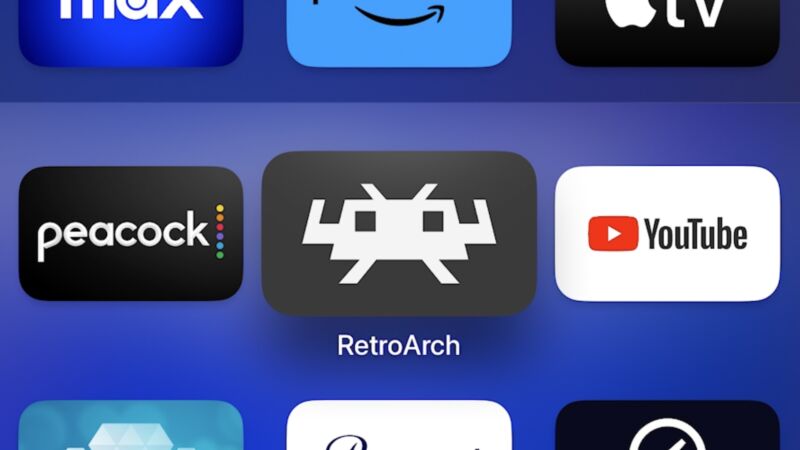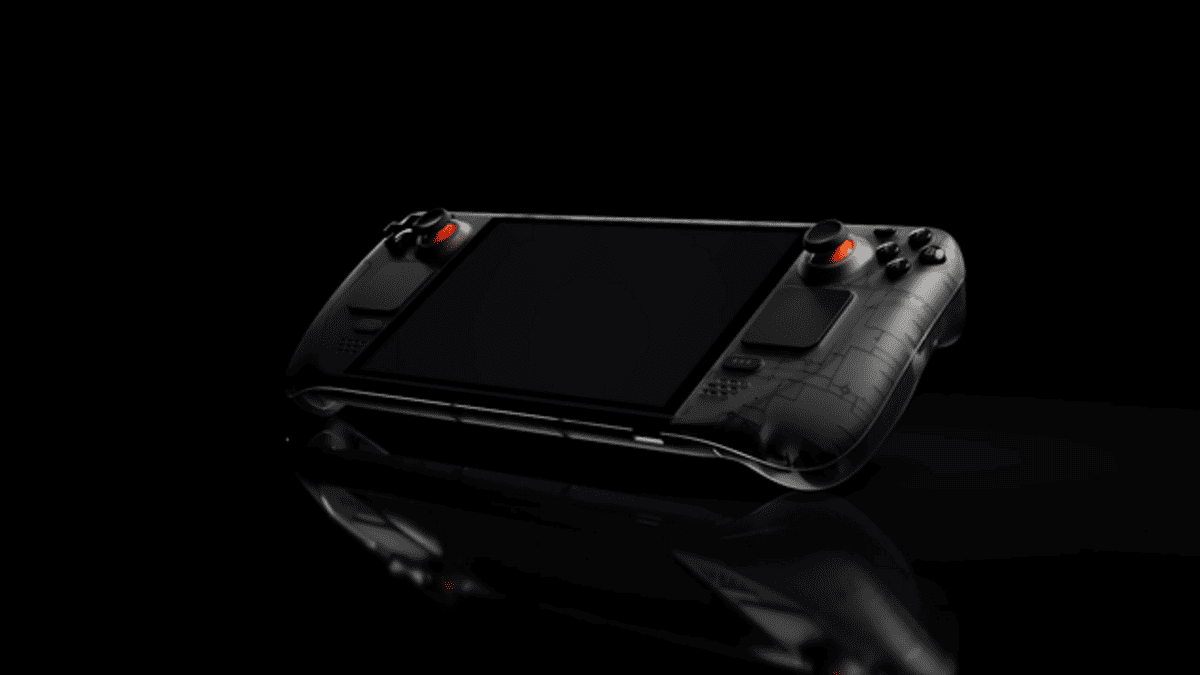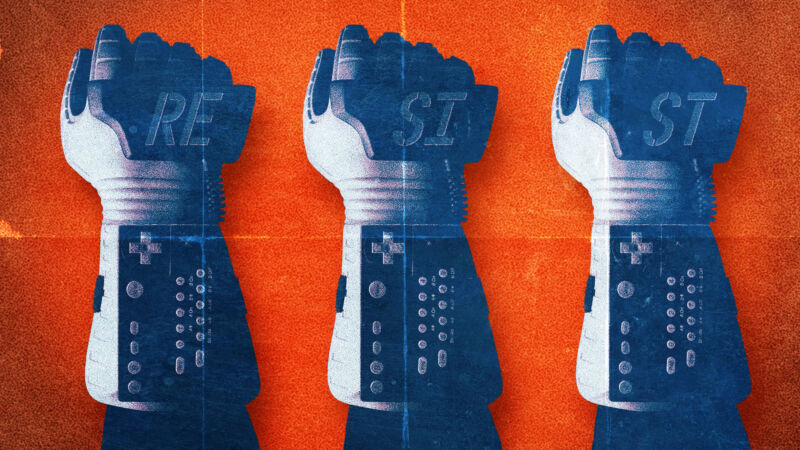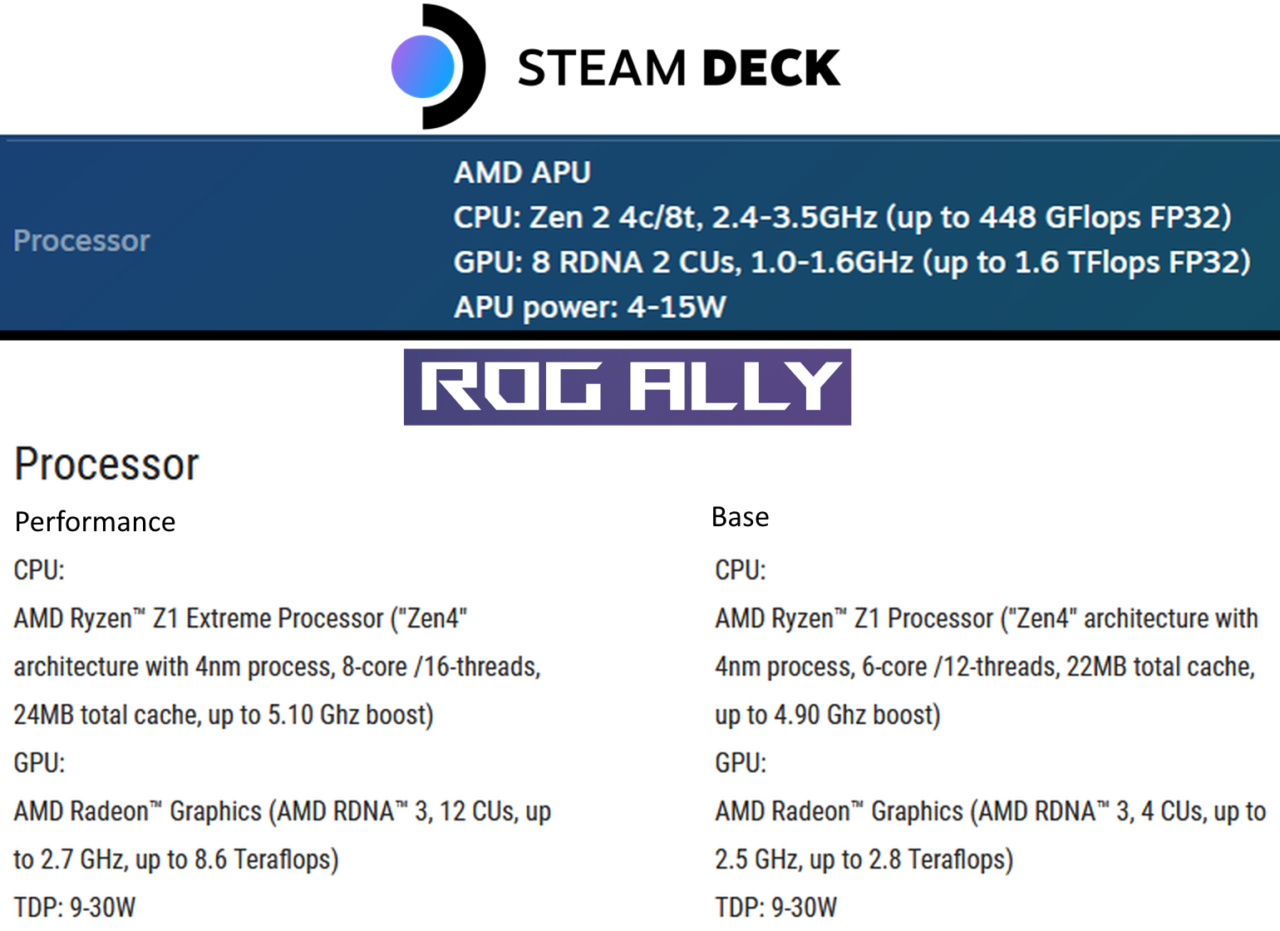Popular Emulator Changes Logo After Adobe Sends Legal Threat

The people behind the immensely popular iOS retro game emulator, Delta, have been forced to quickly change the app’s logo after receiving legal threats from Adobe and warnings from Apple.

The people behind the immensely popular iOS retro game emulator, Delta, have been forced to quickly change the app’s logo after receiving legal threats from Adobe and warnings from Apple.

Enlarge / The RetroArch app installed in tvOS. (credit: Andrew Cunningham)
Apple’s initial pitch for the tvOS and the Apple TV as it currently exists was centered around apps. No longer a mere streaming box, the Apple TV would also be a destination for general-purpose software and games, piggybacking off of the iPhone's vibrant app and game library.
That never really panned out, and the Apple TV is still mostly a box for streaming TV shows and movies. But the same App Store rule change that recently allowed Delta, PPSSPP, and other retro console emulators onto the iPhone and iPad could also make the Apple TV appeal to people who want a small, efficient, no-fuss console emulator for their TVs.
So far, few of the emulators that have made it to the iPhone have been ported to the Apple TV. But earlier this week, the streaming box got an official port of RetroArch, the sprawling collection of emulators that runs on everything from the PlayStation Portable to the Raspberry Pi. RetroArch could be sideloaded onto iOS and tvOS before this, but only using awkward workarounds that took a lot more work and know-how than downloading an app from the App Store.

Months after it shutdown the popular Switch emulator Yuzu over copyright infringement and piracy concerns, Nintendo has initiated a mass takedown of related backups and apparent clones on the Microsoft-owned platform Github. Over 8,000 repositories were removed as the Zelda publisher seemingly tries to stomp out forks…

Enlarge / Don't expect to see this on the iOS App Store any time soon. (credit: OatmealDome)
Last week's release of the Delta emulation suite finally gave iOS users easy, no-sideloading-required access to classic Nintendo game emulation up through the Nintendo 64 era. When it comes to emulating Nintendo's subsequent home consoles on iOS, though, some technical restrictions imposed by Apple are making it difficult to get a functional emulator on the App Store.
In a recent blog post, DolphiniOS developer (and longtime Switch hacker) OatmealDome explains how a Dolphin code fork—which ports the popular GameCube and Wii emulator to Apple's smartphone OS—uses just-in-time (JIT) compilation to translate the PowerPC instructions from those retro consoles into ARM-compatible iOS code. But Apple's App Store regulations against apps that "install executable code" (Section 3.3.1B) generally prevent JIT recompilation on iOS, with very limited exceptions such as web browsers. That restriction may have some valid security reasoning behind it, but it can also get in the way for developers of tools like third-party browser engines (except recently in the EU).
While MacOS developers can make use of an explicit entitlement to allow JIT recompilation in an app, that exception doesn't apply to iOS developers. And while alternative App Stores and sideloaded apps (including DolphiniOS) have discovered various ways to enable JIT compilation on both jailbroken and stock iOS devices, these workarounds can get quite arcane and occasionally break with new iOS releases.

Tropic Haze – the company behind the emulation software Yuzu – has responded to Nintendo's summons that accuses the company of "illegally circumventing Nintendo's software encryption".
Earlier this week, Ed reported Nintendo was suing the creators of Switch emulator Yuzu, claiming more than one million copies of Zelda: Tears of the Kingdom were pirated ahead of its release.
In the lawsuit, Nintendo claimed that by allowing Yuzu emulator users to play its games illegally by circumventing its software encryption, Tropic Haze facilitates piracy "at a colossal scale".

The Steam Deck certainly revamped the segment of mobile gaming by offering a portable PC experience. The versatile handheld allows gamers to enjoy PC AAA ...
The post How to Play Emulators on Steam Deck appeared first on Gizchina.com.

EmulationStation Desktop Edition, or ES-DE, is a popular user interface for organizing, launching and playing video games designed for consoles. It’s not an emulator itself, but it makes it easy to manage emulators for a console-like experience on devices like handheld gaming PCs or computers plugged into a big-screen TV. Earlier this month the developer […]
The post EmulationStation-DE for Android booted from Amazon Appstore, now available through Patreon appeared first on Liliputing.

Enlarge / Power (glove) to the people. (credit: Aurich Lawson)
Nintendo's recent lawsuit against Switch emulator-maker Yuzu seems written like it was designed to strike fear into the heart of the entire emulation community. But despite legal arguments that sometimes cut at the very idea of emulation itself, members of the emulation development community I talked to didn't seem very worried about coming under a Yuzu-style legal threat from Nintendo or other console makers. Indeed, those developers told me they've long taken numerous precautions against that very outcome and said they feel they have good reasons to believe they can avoid Yuzu's fate.
"I can assure [you], experienced emulator developers are very aware of copyright issues," said Lycoder, who has worked on emulators for consoles ranging from the NES to the Dreamcast. "I've personally always maintained strict rules about how I deal with copyrighted content in my projects, and most other people I know from the emulation scene do the same thing."
"This lawsuit is not introducing any new element that people in the emulation community have not known of for a long time," said Parsifal, a hobbyist developer who has written emulators for the Apple II, Space Invaders, and the CHIP-8 virtual machine. "Emulation is fine as long as you don't infringe on copyright and trademarks."

ASUS announced a potent Steam Deck competitor May 11th and released the spec sheets for two models that vary in more ways than the different Steam Deck options from Valve. We’ll be looking at the official tech specs for each device and comparing them side by side. There’s some juicy differences ahead, so let’s get started!
First, we’ll be comparing the APU between each device, which is the combination processor (CPU) and graphics unit (GPU) that makes the funny man on the screen do the little dance. Higher-performance APUs can process more little dances per second. Together with RAM, they determine how pretty the funny man’s face and house look.

The Steam Deck features a relatively older Zen 2 APU from AMD, while the Ally has a newer Zen 4 APU. This allows for a denser layout of processing units in the Ally, increasing performance but also increasing the amount of power drawn. With the smaller architecture comes an increased core and thread count: the base Ally has 50% more cores and threads than the Steam Deck, while the extreme Ally has double the core and thread count.
Processing speeds are much faster on the Ally as well, right around 1.5GHz higher on both models compared to the Steam Deck. CPU-intensive games will almost certainly run better on the Ally compared to the Steam Deck, and the increased CPU performance will help push framerates closer to the 120fps maximum. Performance in this regard seems quite impressive!
Next we’ll be looking at RAM, which is where the data that’s necessary for active processes and open applications is temporarily stored for fast access. More RAM means more processes can be worked on at once, and faster RAM means more processes can be done in the same amount of time.

While the Steam Deck features quad-channel RAM (compared to the Ally’s dual-channel), there should be no appreciable difference in performance between the two in this regard. However, the 16% faster RAM speed may introduce a slight performance advantage to the Ally, as AMD APUs are notorious for loving high-speed RAM.
The overall capacity of each is the same across all models in this lineup, with each device featuring 16GB of RAM as the only option. Fortunately, that should be plenty for practically every modern game. The RAM speeds of both devices are quite fast, and will likely deliver the same performance in the majority of games. Not much of a difference in this aspect, so let’s move on!
Storage is straightforward—it’s the capacity for all software or data present on the device. Both handhelds feature Solid State Drives (SSD) across the entire lineup, with only the lowest-spec Steam Deck featuring a different type of SSD that may run a little slower than the others we’re looking at. But hey, that one’s only 64GB anyways, so it’s not like you’d be able to run any major brand-new AAA releases from it anyway!

Storage is the only major difference between the various versions of the Steam Deck, with the cheapest model having only 64GB of eMMC SSD storage. The two more expensive Steam Decks feature faster NVMe SSDs at either 256GB or 512GB. ASUS took the liberty of making the storage decision for you, with identical 512GB NVMe SSDs on the base and extreme models. The Ally features a generation 4 PCIe connection, which has double the transfer rate of the PCIe 3.0 in the 256 and 512GB Steam Decks and a little over triple the transfer rate of the PCIe 2.0 in the 64GB.
While this sounds like a crazy increase in speeds over the Steam Deck, no game should ever reach the maximum transfer speed of a PCIe 3.0 SSD, and a PCIe 2.0 SSD should only cause one or two frames lost per second at most. The only noticeable difference between them then, if any, would be slightly improved loading times on the faster drives. Since these storage options are so effectively similar, and since modern games are ballooning in size more and more every year, no matter which you choose… I see a MicroSD card purchase in your future! So, just keep that in mind.
Screens are incredibly important on handheld gaming devices, and the Ally does it’s best to one-up the Steam Deck’s screen in nearly every way—and if the tech specs are any indication, it succeeds. Important parts of a screen include the resolution (the number of pixels on the screen), the refresh rate (the number of images the screen can display per second), and the brightness (which is measured in nits).

Like the APUs, the screens are a major point of difference between the Steam Deck and the Ally, with each brand sporting the same screen across all of their respective models. Both the Deck and the Ally include an IPS LCD screen that is about the same physical size.
But the Ally has increased resolution (1080p compared to 800p), double the refresh rate, and 25% higher maximum brightness. These should all come together to produce a brighter, crisper, smoother image on the Ally—but at the certain cost of increased heat and reduced battery life, unless you dial back the performance. Playing games with low resource requirements on the Ally will benefit most from the 120hz refresh rate, creating the opportunity for highly and consistently smooth gameplay. The extra brightness won’t come in much use unless you frequently play somewhere without proper shade, like a nice beach or the heart of a dying star.

The ports between both devices are largely the same, with each featuring a 3.5mm headphone jack, a MicroSD card reader, and a USB-C port capable of high-speed video and audio streaming. The Ally also lists that the USB-C is a combination port with the “ROG XG Mobile Interface”, a type of external graphics card you can connect to increase the performance of the Ally; but then it isn’t so portable, is it?
As for wireless connectivity, both feature full Bluetooth compatibility to tether your favorite controllers and headphones.
The Steam Deck uses the Arch-based SteamOS that was custom created for the device. It’s a fairly smooth UI with some decent settings options, but it lacks compatibility with third-party programs. Windows can be installed and dual-booted from, but the more limited specs of the Steam Deck will hold the performance back.
The Ally, conversely, will come loaded with Windows 11 from the start, allowing for a wider range of compatibility with many programs. For most people, Windows 11 isn’t that much of a deterrence, but to some people it’s a dealbreaker. It will probably bog down the performance a little since the operating system isn’t built specifically for gaming like SteamOS is on the Steam Deck, but Windows 11 opens the door to many applications beyond just playing games on Steam.
Both have the same battery capacity at 40KWh. Valve estimates that the Steam Deck’s battery powers 2-8 hours of gameplay, and its APU only draws half the power of the Ally at both minimum and maximum wattage. We can conservatively estimate the battery life range for the ROG Ally may be half of the Steam Deck: around 1-4 hours of gaming time, but of course this may vary when you factor in background processes like Window 11 and gaming software suites, as well as any optimizations ASUS implements.
The Ally weighs about 9% less than the Steam Deck (608 grams and 669 grams, respectively), and has thinner, flatter grips that reduce the overall weight. It’s also a little narrower, reducing its footprint on desks and tables while maintaining the same screen size as the Steam Deck. Height remains almost the same, only 6mm shorter on the Ally, as both devices feature very little vertical bezel around the screen. Not bad! A little more compact while remaining big on features.
If you find yourself unsatisfied by the sixteen buttons on a standard controller layout, luckily both the Ally and the Steam Deck have additional input buttons on the back of the grips. While the Ally has two paddle-style buttons on the back, the Steam Deck features four larger buttons that are more flush with the curves of the grips. The Steam Deck additionally features twin touch pads on either side of the screen, something that the Ally lacks entirely, which can not only easily enable mouse control but also provide an extra set of inputs (an important feature in games like Arma or Squad).

Left, in green: Two buttons on the back of the Ally | Middle, in blue: Four buttons on the back of the Steam Deck | Right, in red: Two touch pads on the front of the Steam Deck
Now onto an all-important aspect: pricing!
The weaker 256GB version of the Ally is $599 while the more powerful 512GB version is only $100 more at $699.
The Steam Deck is available in three prices: $399 for the 64GB, $529 for the 256GB and $649 for the 512GB.
The increasingly expensive Steam Deck models also include extras like carrying cases, Steam profile bundles, and more premium display glass. Notably, the Ally is the only device that actually has performance differences between the models, and the difference is absolutely massive, to the point where saving $100 isn’t really worth the loss in performance. You’re saving just 14% of the price to have your performance reduced by approximately 67%, based on the maximum number of teraflops per second. You’re also losing a lot of processing power by missing out on two cores and four threads, as well as a little bit of maximum clock speed.
Conversely, the Steam Deck delivers a consistent performance across the board starting at the base $399 version. This model’s price puts the Steam Deck at a very competitive place compared to the Ally, which starts at 50% more but offers a sizeable performance bump. The $529 and even $649 models only gain a faster and larger SSD—and let’s be real, regardless of model you’ll most likely end up with a massive-capacity MicroSD card jammed into the reader that will never leave until entropy destroys the universe.
If you’re looking to play a handful of games that aren’t too demanding, it seems like the $399 Steam Deck is your best bet. If graphic fidelity and keeping performance steady is more important, then it’s probably worth strongly considering the Ally, whether that’s the performance version or not.
Once the Ally is released and a mainstream Steam Deck competitor hits the shelves, it’s really going to beg the question of who the two more expensive Steam Deck models are marketed towards, as there will soon be a $600 alternative that’s significantly more powerful and provides just as much high-speed storage as even the $649 Steam Deck. So maybe a price cut will come to those higher-tier Deck variants? Only time will tell!
For now, this is only the announcement. As more testing is released and we get a better idea of the real performance of the Ally and not just what ASUS tells us, its place relative to the Steam Deck will get clearer. The biggest concerns come from battery life; these are some high specs for a handheld!
The screen is brighter, higher resolution, and with double the refresh rate; the APU pulls up to twice the wattage; and in the background you’ve got Windows 11 and whatever extra gaming suites you have running, too. This battery is going to be carrying the weight of the world on its back, forever doomed to a full recharge after just a few hours of gaming. To every lithium-ion battery conscripted by ASUS into another ROG Ally, I salute you.
What are your thoughts on the ASUS ROG Ally? Would you consider spending the extra money for the performance? Let us know what you think and, as always, thanks for reading!